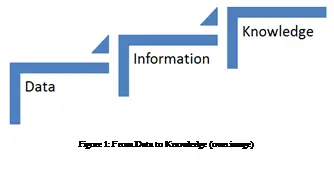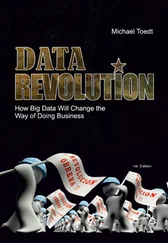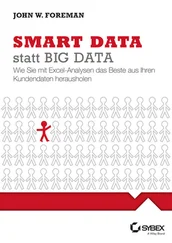McKinsey considers Big Data a new type of corporate asset.
McKinsey considers Big Data a new type of corporate asset, which will cut across all business units. It will function like a powerful brand does and thus represent a key basis for competition. [7] According to a 2012 IBM study, 1,700 marketing experts agreed that Big Data will significantly impact their work environment. [8] It is assumed that companies using Big Data will be able to increase their profit margins by up to 60%. [9] The impact on the hotel industry is considered even higher due to the expanding share of indirect bookings and the linked commission payments.
The possibility to increase profit margins should help to draw the attention of the senior management to this topic. Further benefits are the enhancement of decision-making processes as well as the qualitative improveent of products and services. The prerequisite is, however, the ability to utilize Big Data.
1.2. From Data to Knowledge or from Big Data to Big Insight
Big Data is characterized by:
volume (huge amount of data)
velocity (data should be available almost in real-time), and
variety (structured and unstructured data from different sources has to be collected and linked). [10]
These three elements indicate the complexity of the topic but two essential aspects are missing in most Big Data definitions, which is veracity, and value.
veracity (correctness of the collected data)
value (link of the data between the different data sources – tagging)
Cleaning and linking of data are often ignored or underestimated.
The complexity of cleaning and linking the growing amount of data, which comes from different sources, is often ignored or underestimated. Although the quality of the collected data is one of the key factors of success, the complexity of data management in general is highly underestimated [11]. [12]Adriaans, Zantinge state that “without the right data there is little gold to be mined; here again, we must apply the rule ‘garbage in, garbage out”. [13]
According to a 2010 study only 40% of SAP users trust the data they have in their system, 47% have an average trust level, and 7% have no trust at all. [14]These numbers can be applied to the hotel industry.

The above figure shows the process from generating data to cleaning and analyzing it in order to generate information. The growing amount of data helps to continuously improve information about the relevant business areas. These three interrelated steps are the basis for qualitative decision-making processes, from real-time automatically triggered marketing activities to long-term strategic decisions.
Big Data can also be described by the “OODA-Loop”. OODA stands for Observe-Orient-Decide-Act. This cycle has its roots in the military, but can be easily adapted to the topic of Big Data. [15]
The concept is simple: Managers should observe the available data sets by applying analyzing models and reporting tools, then orient themselves, and take a decision based on the findings. The final action is the result of a complex and data-driven decision-making process, which reduces the risks of failure.
Data quality is one of the key factors for the successful implementation of a Big Data initiative.
Конец ознакомительного фрагмента.
Текст предоставлен ООО «ЛитРес».
Прочитайте эту книгу целиком, купив полную легальную версию на ЛитРес.
Безопасно оплатить книгу можно банковской картой Visa, MasterCard, Maestro, со счета мобильного телефона, с платежного терминала, в салоне МТС или Связной, через PayPal, WebMoney, Яндекс.Деньги, QIWI Кошелек, бонусными картами или другим удобным Вам способом.













